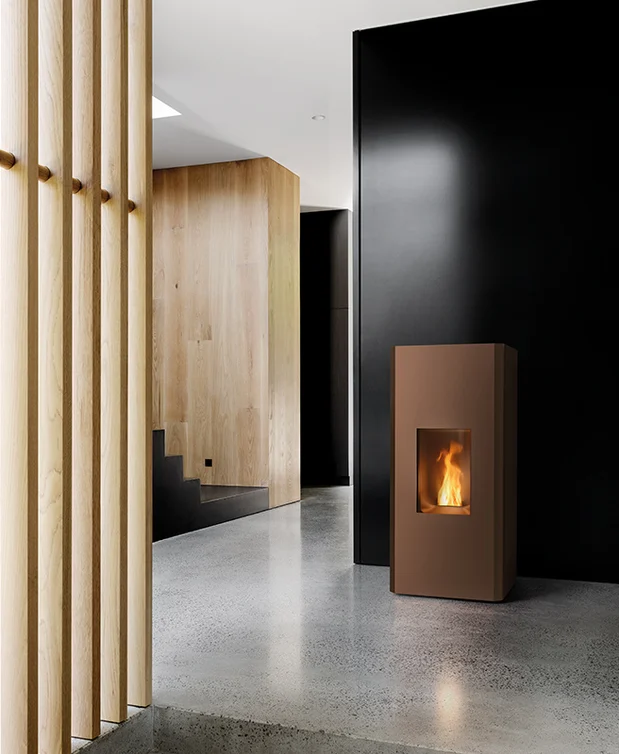Advantages and Disadvantages: Let’s make it clear
Pellet stoves have taken the heating market by storm in recent years, attracting increasing interest from consumers. However, not everyone has a clear idea of how they work, especially when it comes to understanding their advantages and disadvantages.
Let’s go step by step and clarify things.
What is Pellet?
Pellet is a 100% natural fuel made from processed wood waste, which is first ground into sawdust, then dried, and finally compressed into small cylinders.
In full compliance with environmental sustainability, only untreated wood is used, and it remains that way throughout the production process. Lignin, a substance naturally present in woody plants, binds the wood without the need for adhesives or chemicals.
These characteristics make pellet an exceptional fuel. Weight for weight, it burns much longer and produces less waste (ash and fine dust) compared to regular firewood.
PROS AND CONS OF PELLET STOVES
Are you wondering if it's really advantageous to furnish your home with this type of product?
Let’s look at the pros and cons in detail.
PROS
- Thanks to the processing it undergoes, pellet becomes denser and contains very low moisture. This increases its calorific power, meaning it burns longer and generates more heat compared to ordinary firewood, optimizing consumption.
- Pellet combustion produces less ash and dust, making cleaning and maintenance easier.
- Pellet is sold in sealed 15 kg bags, ensuring greater cleanliness at home compared to wood, which inevitably brings along dust, insects, etc.
- Pellet stoves allow you to program ignition, shutdown, and temperature/ventilation adjustments. All these functions can also be managed remotely via a smartphone, so you can heat your home even when you're away, and safely.
- With a hot air ducting system, you can heat multiple rooms and optimize the stove’s performance, while hydro stoves can heat the entire house.
- Not just technology and functionality. Stoves are also real pieces of furniture, with designs that are constantly evolving to meet various needs.
- Pellet stoves benefit from numerous tax incentives, which means installing a system with this technology allows you to recover part of the expenses.
- They generate immediate heat, unlike radiators, which warm the house very slowly.
CONS
- Pellet bags require storage space and weigh 15 kg each. To solve the weight issue, when opening a new bag, you can divide the content, pouring a portion into a basket or container with a scoop to keep nearby the stove.
- The pellet stove’s brazier needs periodic cleaning of ash, at least every 5–7 days depending on usage.
IS THE STOVE’S AESTHETICS A PRO OR A CON?
An important element to consider before purchasing is design. While earlier stoves were not known for their beauty, the situation has completely changed. Decades have passed, and today’s models are truly impressive.
So, design is definitely a Pro!
The beauty of the flame is enhanced by combustion technology. In stoves with the new Core technology, the flame develops naturally, mimicking the slow and dancing rhythm of a wood fire.
Many external cladding options are available to suit your style. Among the catalog choices, besides painted aluminum, there are cast iron, ceramic, natural stone, and gres. Additionally, some stoves come in a CUSTOM version, with fully customizable cladding.
Look at these images—more expressive than a thousand words!


And that’s not all... we can also give you an idea of how a stove can perfectly integrate into your home décor.
Request a technical survey, and we’ll show you the stove’s effect in your home using augmented reality technology!


